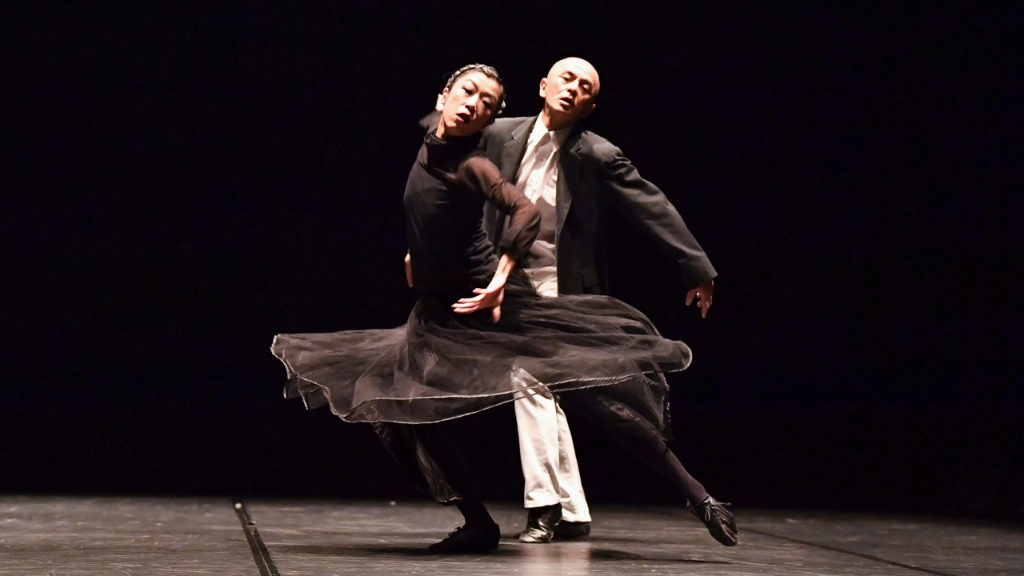Words by Katie Hagan
If you brought Dostoevsky back into a room to ask if his novel, The Idiot, could be considered an ‘embodied text’, I wonder what his answer would be.
Renowned Japanese choreographer Saburo Teshigawara takes Dostoevsky’s treasured favourite; casting himself as the eponymous, pathetically innocent the “idiot” Prince Myshkin, with his life-long partner Rihoko Sato as his restrained love-interest Nastasya Filippovna.
What unfurls onstage is, I presume, as close as you can get to embodying a text such as The Idiot. The Idiot has a convoluted plot bestrewn with Dostoevsky’s own frustration with 19th century Russia’s social codes, Christianity and indeed his personal experience with epilepsy. Teshigawara’s erudite reinterpretation enables these complexities to engender; and, rather satisfyingly, does this without being tempted to create a piece which seeks to resolve all the complications Dostoevsky left intentionally untied.
The choreography in Teshigawara’s The Idiot embodies and articulates the text’s and its characters’ complexity. Dressed in white, Teshigawara’s movement is paradoxical. It is regularly irregular. With nimble footwork and flicks of the wrist, he is emotionally robotic, stopping and starting and then repeating. The paranoia of having a seizure overhangs Teshigawara’s choreogaphy; Myshkin moves in perpetual uncertainty, unsure when he will slip into a world where consciousness as we know it does not exist.
Rihoko Sato as Nastasya Filippovna is a complete wonder. We, the audience, join Myshkin to all become enraptured by her repetitive, undulating arm sequences. Whilst the effect of her rising and falling wears off in the places it shouldn’t; it still serves as a parallel to Nastasya’s character – as a good woman whose purity is marred by the society she lives in.
Inevitably, Teshigawara’s embodied text falls short at times. Although he encapsulates Myshkin’s interiority and therefore his suffering, losing concentration even for a split second made it hard to get back into The Idiot’s rhythm. Although we can read into it and say the piece is merely mirroring the tidal, up-and-down movement of human experience and consciousness, the result made the overall effect seem somewhat diluted and tired.
But in the grand scheme of things, isn’t movement supposed to reflect who we are as humans, how we behave, how we embody? If we were all without imperfection and if everything was uncomplicated, how true to life would everything be? We are supposed to feel, empathise and learn from art, particularly how it teaches us what it means to be human. Even if sometimes it is a little disappointing.
At the Print Room Coronet, Notting Hill until 30 March. Photo: Abe Akihito
